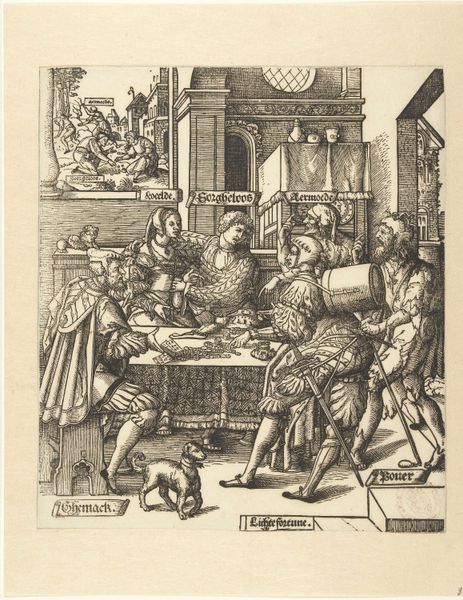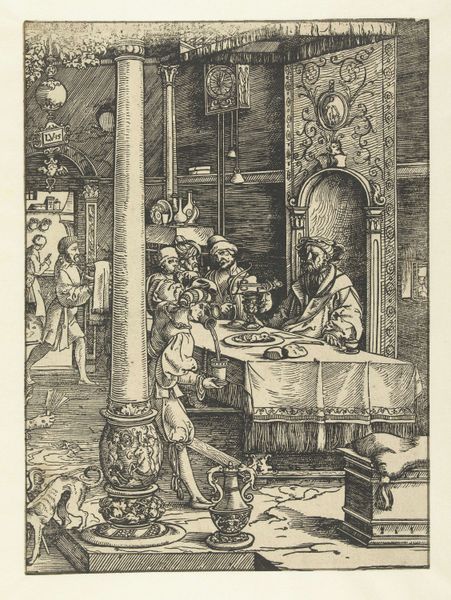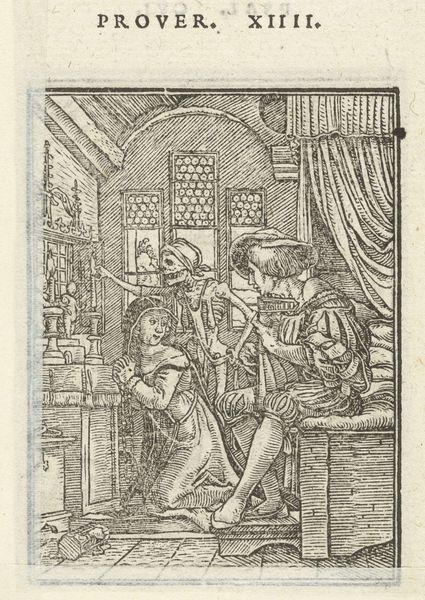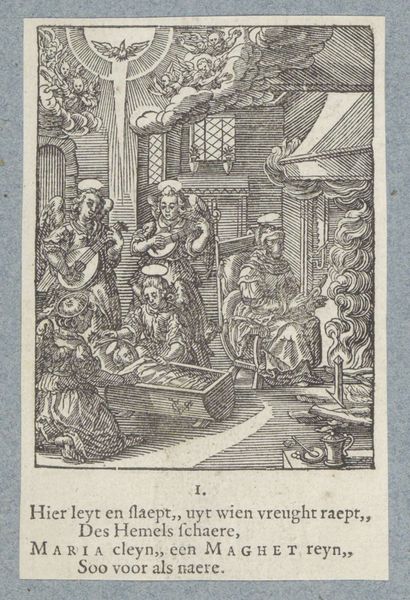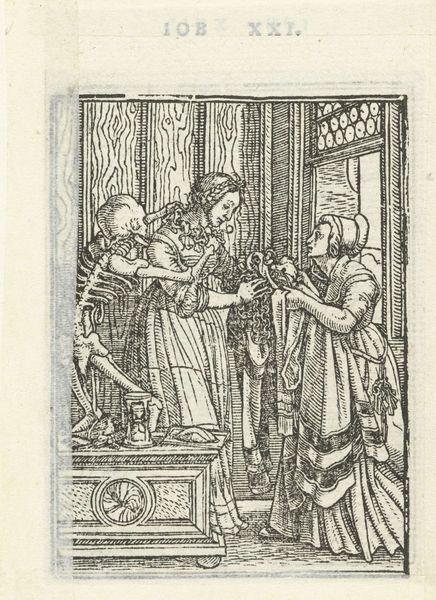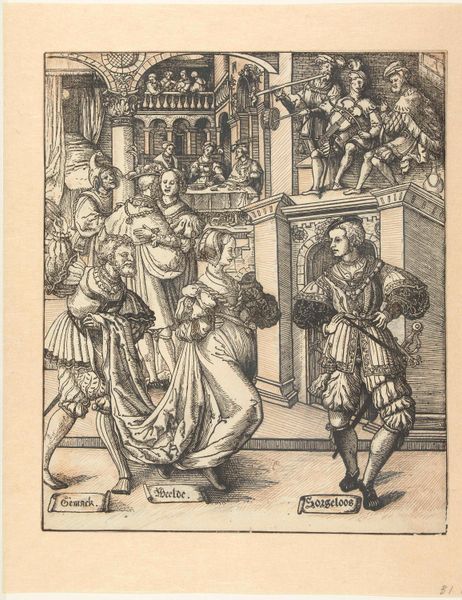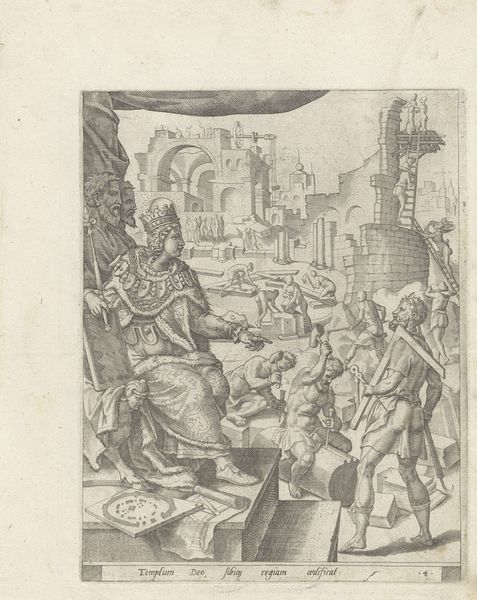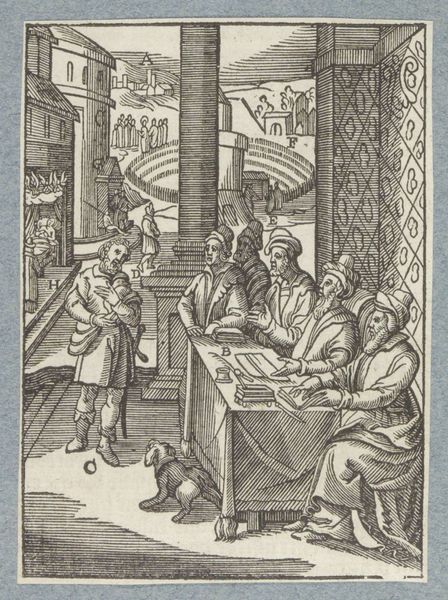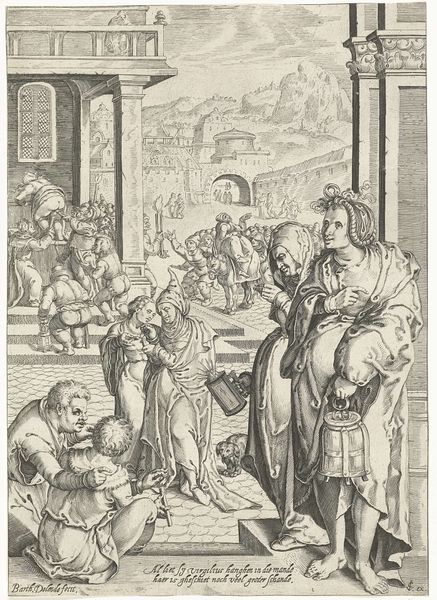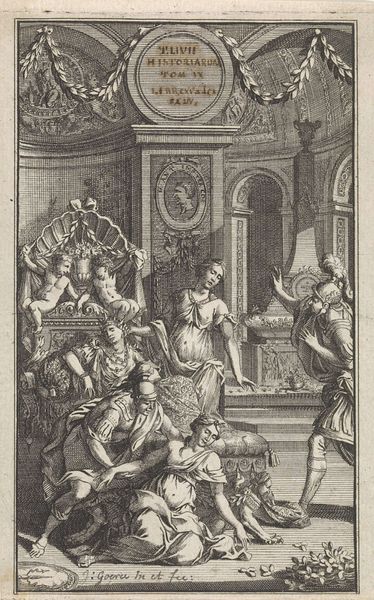
drawing, engraving
#
drawing
#
figuration
#
11_renaissance
#
genre-painting
#
history-painting
#
northern-renaissance
#
engraving
Dimensions: height 270 mm, width 210 mm
Copyright: Rijks Museum: Open Domain
Editor: This engraving from sometime between 1535 and 1545 by Cornelis Anthonisz. is called "The Prodigal Son Receives His Inheritance". It's quite striking. All the fine lines and detail give it a rather formal, almost stilted feel, wouldn’t you say? What strikes you most when you look at this piece? Curator: Stilted perhaps, but I'd counter with calling it delightfully crammed. The composition bursts with visual information. Look at the expressions: that worldly father, so very knowing as he hands over his fortune to the son, whose expression I see as less about newfound riches and more of calculation. Even the architecture seems to comment, doesn’t it? The grand spiral staircase in the back contrasted to the heavy draped canopy over the father figure hints at transience versus tradition, expectation versus freedom... what do you see? Editor: I definitely see what you mean about the faces and that tension you point out. I was so focused on the detail that I didn't think of the architectural elements as part of the story. Does the term “prodigal son” give this meaning that the young son will throw it away for momentary thrills and enjoyment? Curator: Absolutely! The beauty of the "Prodigal Son" narrative is in its multiple readings, as this is a moralizing Northern Renaissance tale and almost proto-genre scene. It is this particular artist’s spin of interpretation, and like all great tales, there is no one correct view! The tale certainly encourages us to meditate on squandered inheritance and lost potential... Editor: I see! Thanks for the rich details and context – it makes the artwork far more alive. Curator: And thank *you* for opening my eyes to some different, delightful nuances of viewing!
Comments
No comments
Be the first to comment and join the conversation on the ultimate creative platform.
